Modeling integers
When modeling integers, we can use colored chips to represent these integers. One color can represent a positive number and another color can represent a negative number.Here, a yellow chip will represent a positive integer and a red chip will represent a negative integer.
There is nothing special about using a yellow chip to represent a positive integer. Some textbooks could use different colors to represent positive and negative integers.
It is extremely important to know how to model a zero. Basically, if we have the same amount of yellow chips and red chips, we say that we have zero pair(s).

For example, the modeling for 4, -1, and -3 are shown below:

For example, all the followings represent zero pair(s).

And so on...
Adding and subtracting integers with modeling can be extremely helpful if you are having problems understanding integers.
In modeling integers, adding and subtracting are always physical actions.
If a board is used with the chip, adding always mean " Add something to the board" and subtraction always mean "Remove something from the board"
Here, we will use a big square to represent a board.
Let's start with addition of integers:
Four interesting examples about modeling integers
Example #1: -2 + -1Put two red chips on the board. Then put one red chip on the board. Since we end up with 3 red chips, the answer is -3
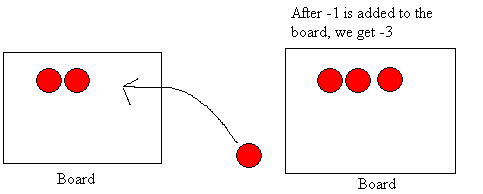
Notice that big arrow represents the "+" sign or the action of adding.
Example #2: -3 + 2
Add 3 red chips on the board to represent -3. Then, add 2 yellow chips to represent 2

Remove the two zero pairs from the board. Since only one red chip remains, the answer is -1.
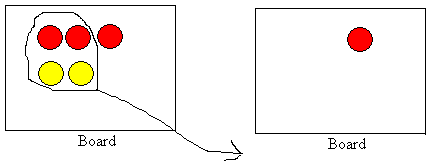
Example #3: -4 − - 2
Put 4 red chips on the board to represent -4. Then, the problem says that you have to minus negative two.
Minus negative two means as we said before to remove -2 from the board. In other words, it means to remove two red chips from the board. Thus, the answer is -2
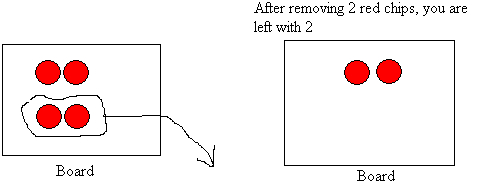
Subtracting with chips becomes tricky when what they tell you to subtract does not exist.
Example #4: -4 − 2
Here, the problem is not asking to subtract -2 as before, but 2.
Start by putting 4 red chips to represent -4.
Now how do you remove 2 or two yellow chips that you don't have?
The only way to do it is to add two zero pairs to the board (shown on the board on the right)
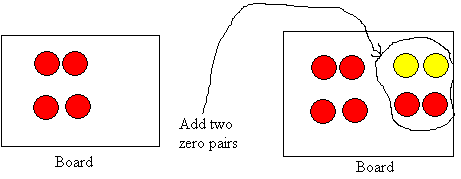
Now, you can remove the two yellow chips. After you do that, you are left with 6 red chip, so the answer is -6
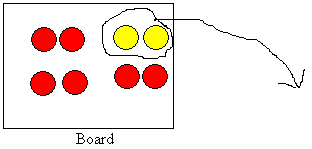
I tried to model most situations above. However, I recognize the fact that modeling integers can be a bit tricky if you have never seen this before.
Therefore, do not hesitate to send me your questions here